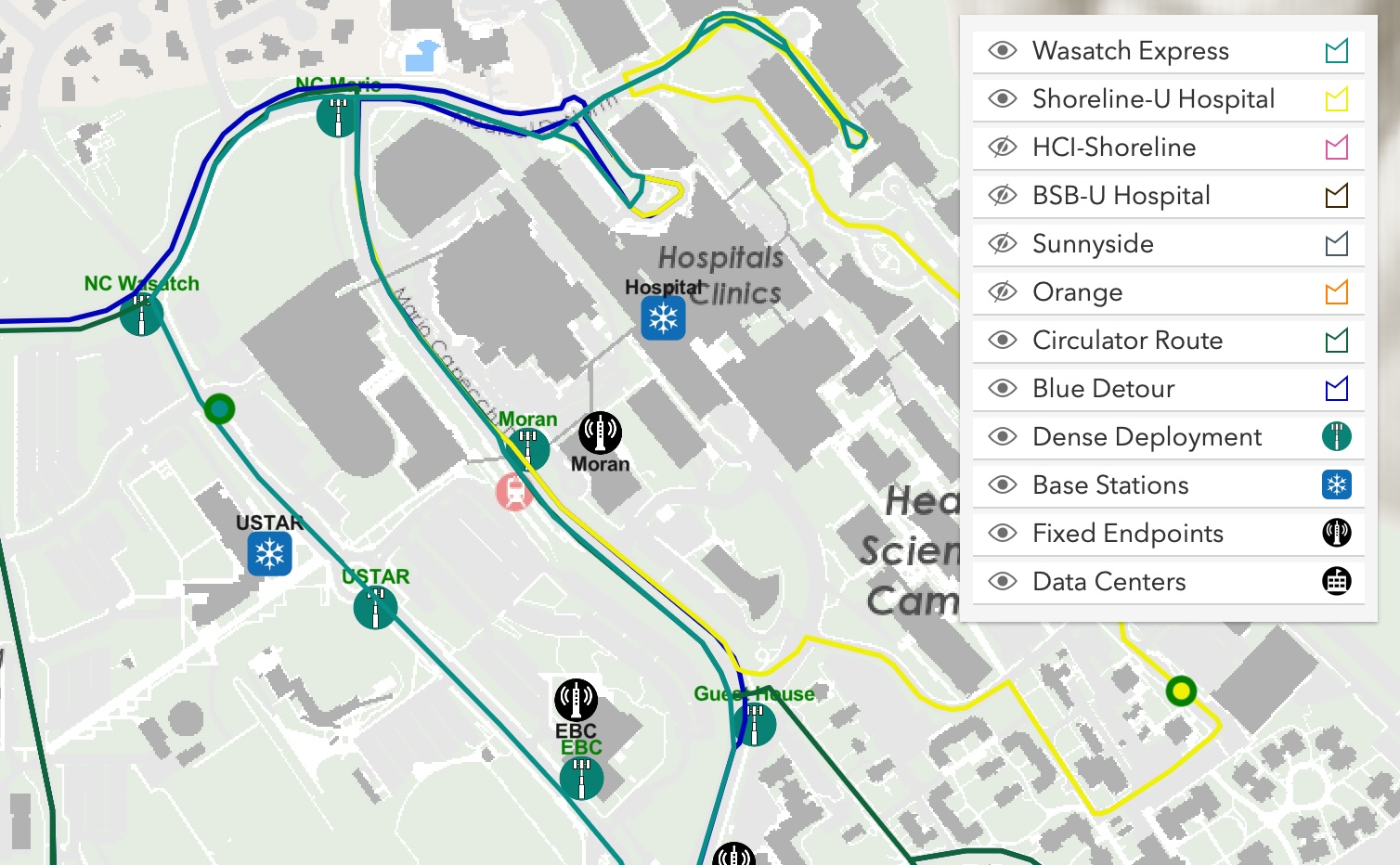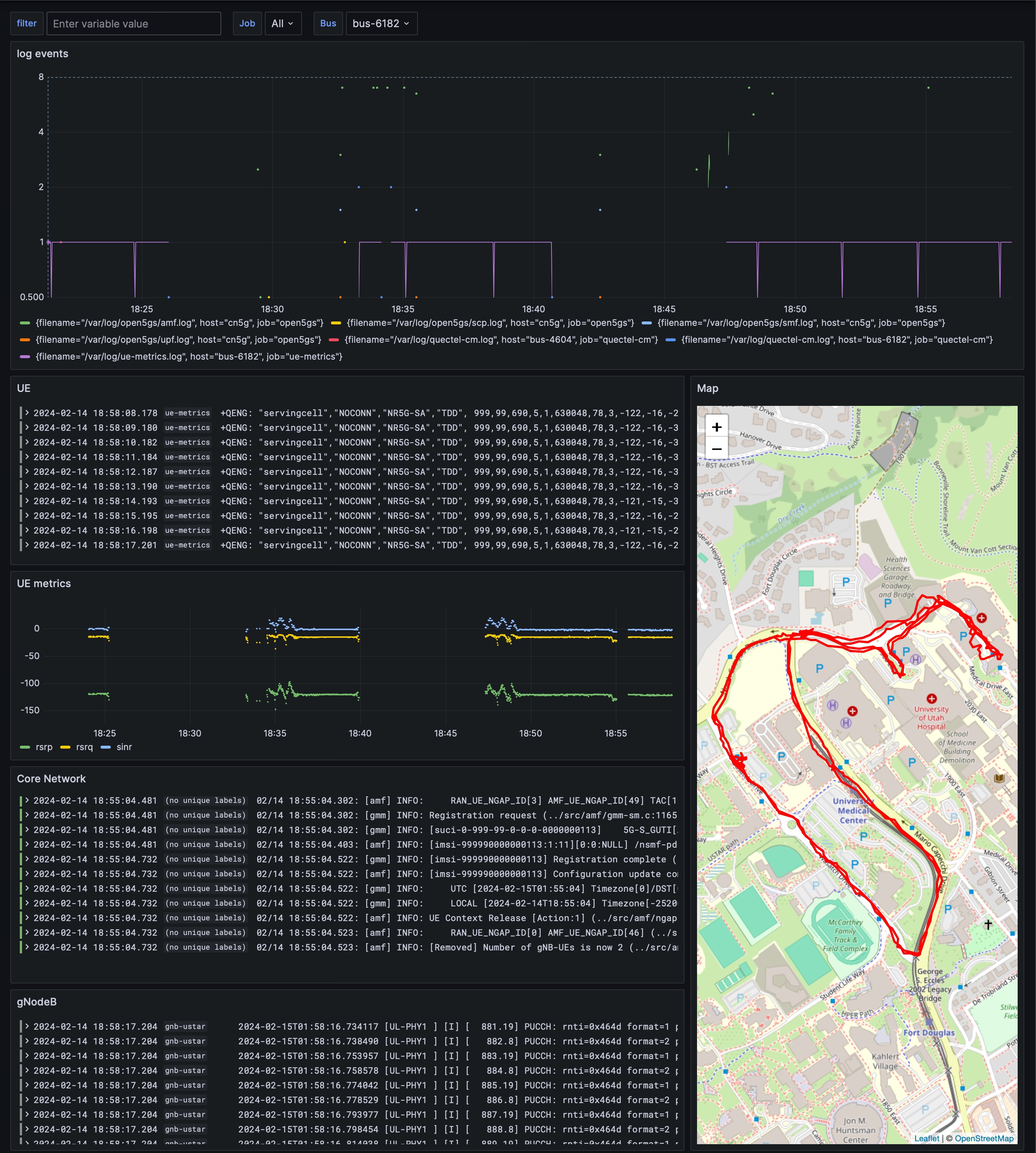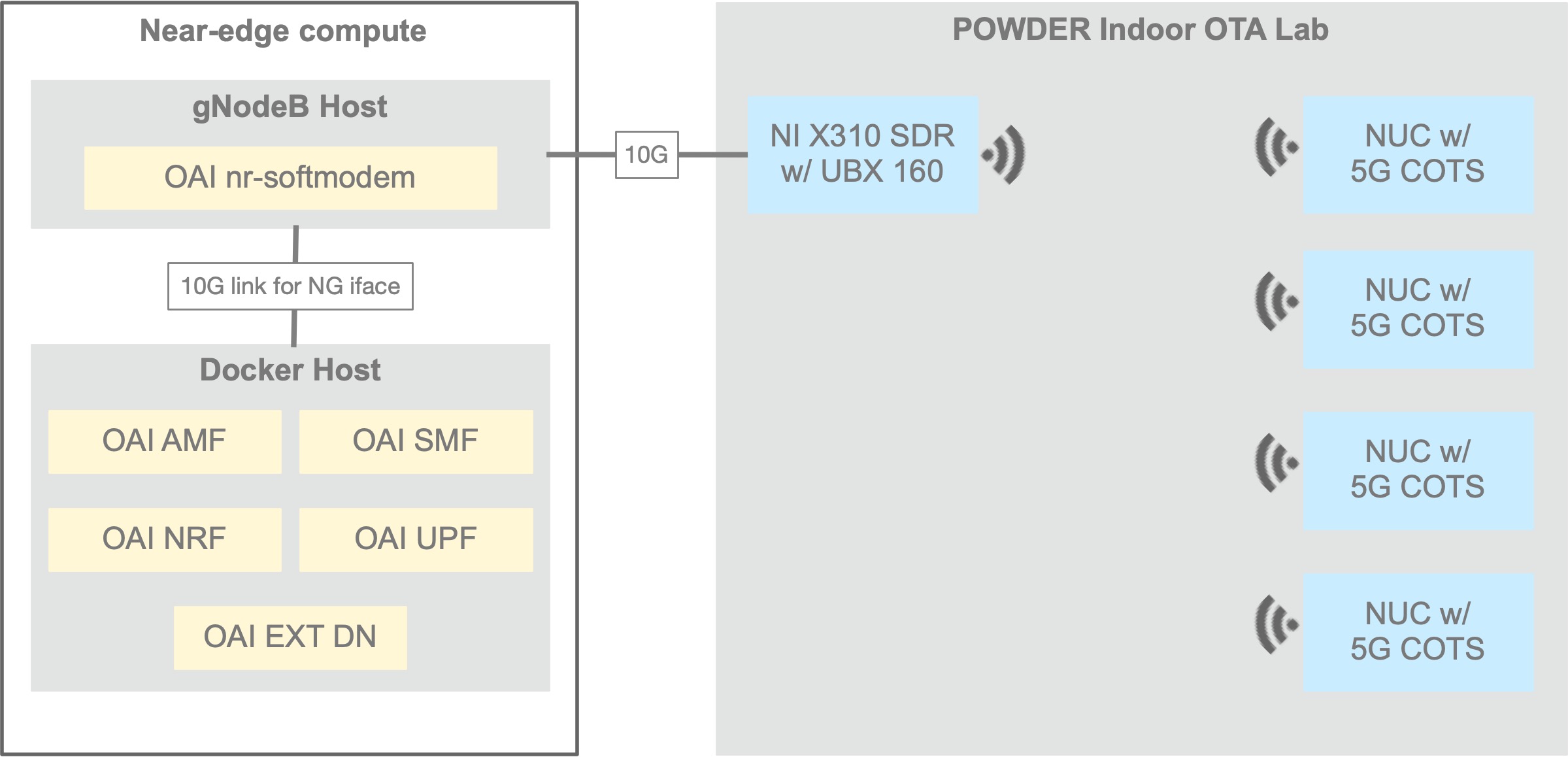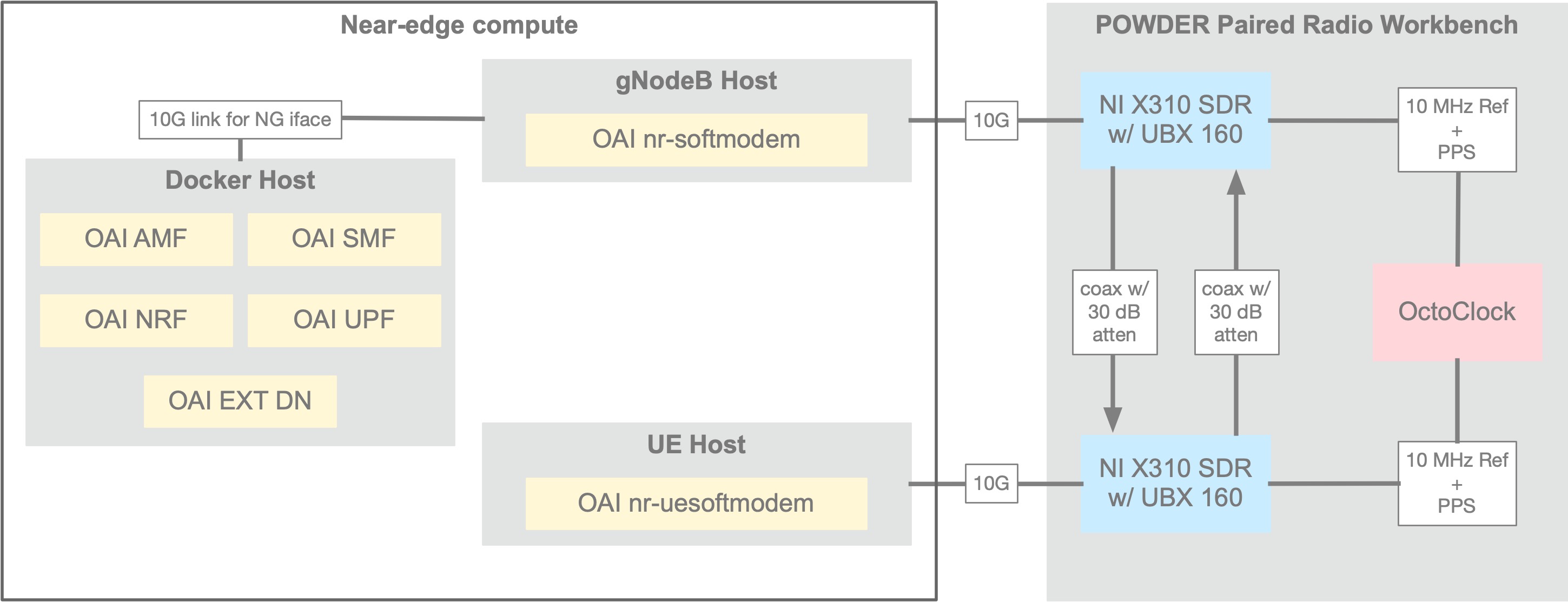5G and beyond is an exciting and important area of wireless research. While commercial 5G networks, which are currently being deployed by MNOs, can be studied to a certain degree in situ, research facilities and tools that can leverage modern software-defined networks and radios are valuable because they allow researchers to manipulate the network at every level, without black boxes interferring with potential insight. Powder provides the most control possible to users for their 5G research, with remote bare-metal access to compute and radio hardware.
Powder's sophisticated hardware, software, and networking infrastructure allows researchers to transition smoothly from simulation to real hardware in controlled-RF or indoor and outdoor over-the-air (OTA) environments. Powder 5G profiles are ready-to-deploy recipies for 5G experiments, targeting a variety of hardware and software, that you can use as jumping off points for your own research.
The Powder Dense Deployment provides access to several outdoor 5G-capable pole-height sites, amenable to deploying gNodeBs. Each of these is equipped with an Intel NUC connected to an NI B210 SDR, which is in turn connected to a custom medium-power TDD RF front end. One or more of these sites can be composed into a 5G network, using OAI or the srsRAN Project, each with a LAN connection to near-edge compute running a 5G core network (Open5GS, OAI CN5G, Free5GC). Powder Mobile Endpoints (campus shuttles provisioned with RF resources and out-of-band networking) include Quectel RM520 5G COTS UEs capable of attaching to gNodeBs deployed to Dense Deployment sites.

Powder example profiles are capable of quickly standing up an end-to-end 5G network and capturing time-coherent logs from relevent processes across all of the compute nodes in the topology, inluding the gNodeB, 5G core, and UEs. The mobile endpoints have access to a local GPSD client that users can use to understand how network performance varies with location, velocity, etc.

Powder currently provides an array of 5G-capable hardware in our Indoor Over-the-air Lab, including:

Powder provides access to multiple Paired Radio Workbenches, which allow users to experiment with real RF transmissions, but avoid the effects of external noise and multipath. Each bench includes a pair of NI X310 SDRs with UBX160 daughter cards and wired RF connections (through 30 dB attenuators). An OctoClock provides a common PPS and 10 MHz reference for the SDRs, allowing for time and frequency synchronization. Additionally, since RF transmissions on the benches propagate via coaxial connections rather than OTA, experimenters can use any spectrum the associated SDR hardware is capable of. We've made an example E2E OAI 5G profile available as a jumping off point for 5G in a controlled RF environment.

Powder users have access to a variety of server-class compute resources that can be leveraged for simulating 5G RAN elements. Starting with a RAN simulator may be useful depending on your research objectives and level of expertise with 5G networks. It may also be useful for research that involves adding features to or otherwise manipulating a 5G core. We provide example profiles for simulating the entire RAN (UERANSIM or srsRAN connected to an Open5GS core network) or just the wireless channel itself in an E2E OpenAirInterface 5G network (OAI CN5G connected to OAI 5G RAN with simulated RF links between gNB/UE). The latter allows for RF channel emulation via the OAI RF simulator.
